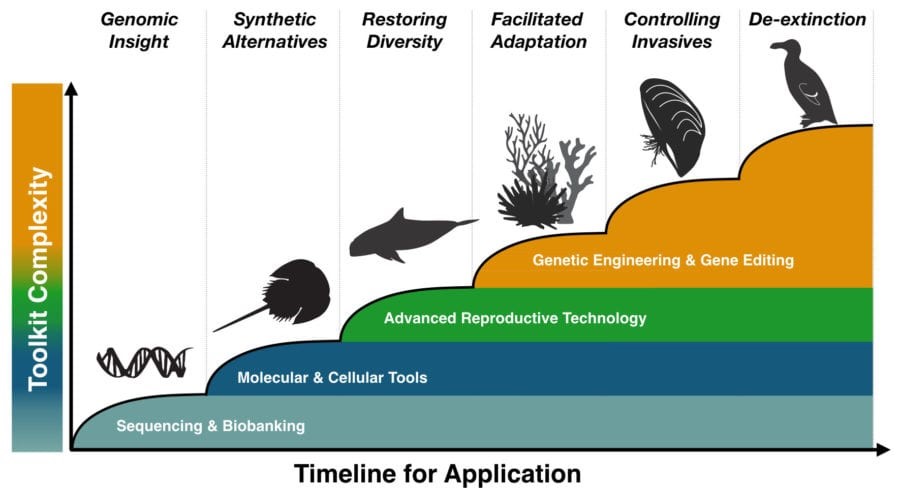Written by Heather Sparks, Communications and Outreach Manager at Revive & Restore
Unlike agriculture or medicine, the field of conservation continues to have limited access to innovations in molecular biology and genomics. Yet these innovations have the potential to greatly empower current conservation practice.
At Revive & Restore, we believe that innovation is necessary to create solutions to the current environmental crisis. Our mission is to enhance biodiversity, and we are pursuing this by bringing biotechnologies to conservation. A major focus of our work is to fund, advocate for, and build a set of biotech-based conservation tools that can support a more biodiverse 21st century, what we call the Genetic Rescue Toolkit.

We place genomic sequencing and biobanking tools at the foundation of the Genetic Rescue Toolkit. That is because many genetic rescue applications, for any species, can benefit from these two things: (1) A high-quality reference genome for that species, and (2) an eternal source of viable cells or tissue accessioned into a biorepository for future research. These essential genetic rescue tools can accelerate conservation efforts. Yet even these basic tools, which are non-controversial and readily obtainable, are desperately lacking for a majority of wildlife species.
At the other end of the spectrum sits a more powerful set of tools—genetic engineering and gene editing—that could, with concerted and careful development, help conservationists facilitate adaptation for endangered species, control the negative impacts of invasive alien species, and even bring some species back from extinction. While these applications are not without controversy or complication, genomic technology has the potential to advance and complement conventional conservation tools. Innovation is vital if we want to reduce biodiversity loss.
Biotechnologies can help solve several intractable environmental challenges and one of the most promising areas is marine conservation. Oceans have been deeply affected by overfishing, invasive species, and climate change. The challenges associated with the marine environment, such as its three-dimensionality and shifting currents, require thoughtful and cautious development of specificity and nuance in applying genetic tools.
This June, at the IUCN World Congress in Marseille, we are convening a diverse group of scientists and conservation experts who are working to apply genetic rescue tools to ocean conservation. Our hope is that their stories will inspire a broader cohort to consider applying biotechnologies to their own conservation problems. Our session is titled A New Genetic Rescue Toolkit for Ocean Conservation. Join us if you are attending IUCN. You can also stay up-to-date on our forum and related activities by visiting our IUCN 2020 webpage.
Recent posts
